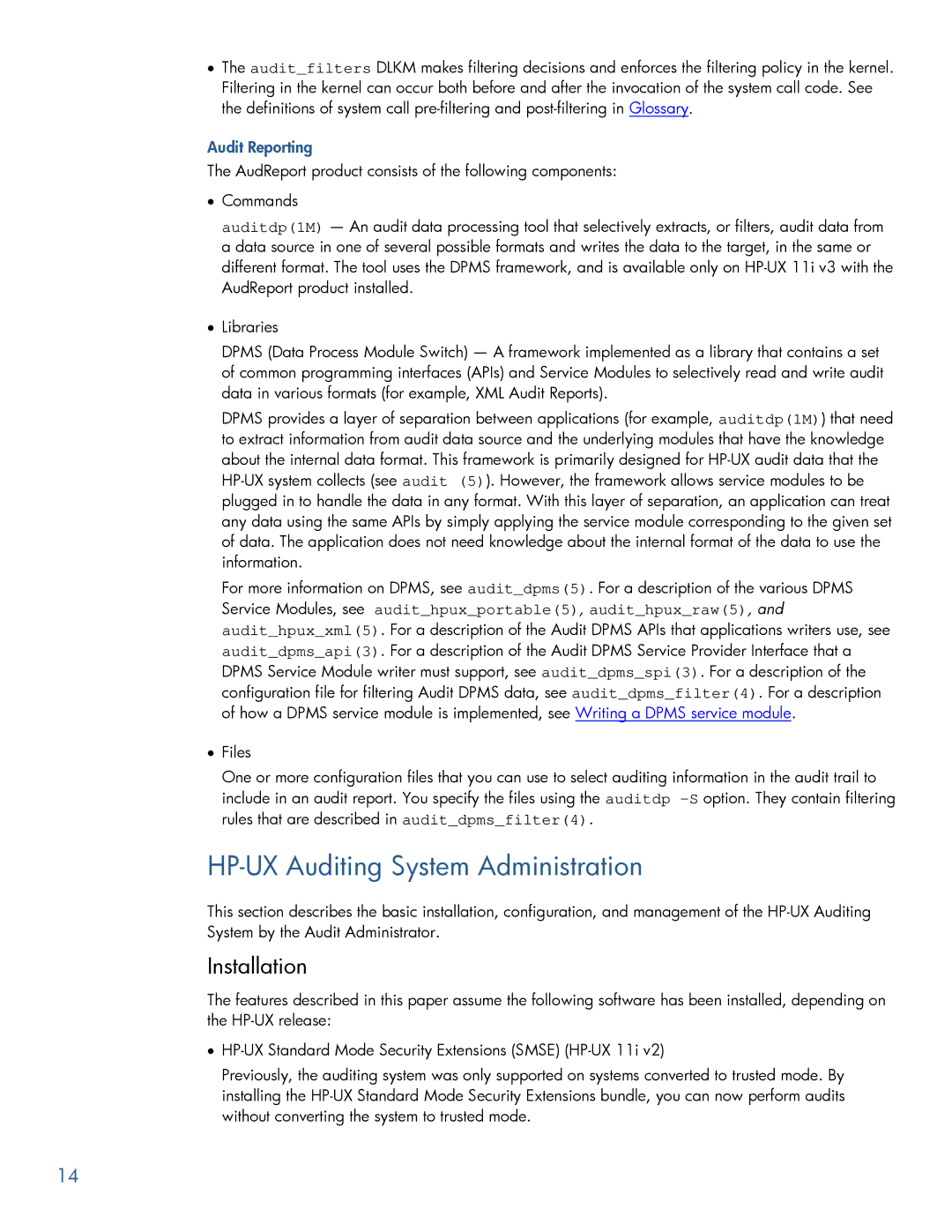•The audit_filters DLKM makes filtering decisions and enforces the filtering policy in the kernel. Filtering in the kernel can occur both before and after the invocation of the system call code. See the definitions of system call
Audit Reporting
The AudReport product consists of the following components:
•Commands
auditdp(1M) — An audit data processing tool that selectively extracts, or filters, audit data from a data source in one of several possible formats and writes the data to the target, in the same or different format. The tool uses the DPMS framework, and is available only on
•Libraries
DPMS (Data Process Module Switch) — A framework implemented as a library that contains a set of common programming interfaces (APIs) and Service Modules to selectively read and write audit data in various formats (for example, XML Audit Reports).
DPMS provides a layer of separation between applications (for example, auditdp(1M)) that need to extract information from audit data source and the underlying modules that have the knowledge about the internal data format. This framework is primarily designed for
For more information on DPMS, see audit_dpms(5). For a description of the various DPMS Service Modules, see audit_hpux_portable(5), audit_hpux_raw(5), and audit_hpux_xml(5). For a description of the Audit DPMS APIs that applications writers use, see audit_dpms_api(3). For a description of the Audit DPMS Service Provider Interface that a DPMS Service Module writer must support, see audit_dpms_spi(3). For a description of the configuration file for filtering Audit DPMS data, see audit_dpms_filter(4). For a description of how a DPMS service module is implemented, see Writing a DPMS service module.
•Files
One or more configuration files that you can use to select auditing information in the audit trail to include in an audit report. You specify the files using the auditdp
HP-UX Auditing System Administration
This section describes the basic installation, configuration, and management of the
Installation
The features described in this paper assume the following software has been installed, depending on the
•
Previously, the auditing system was only supported on systems converted to trusted mode. By installing the
14
